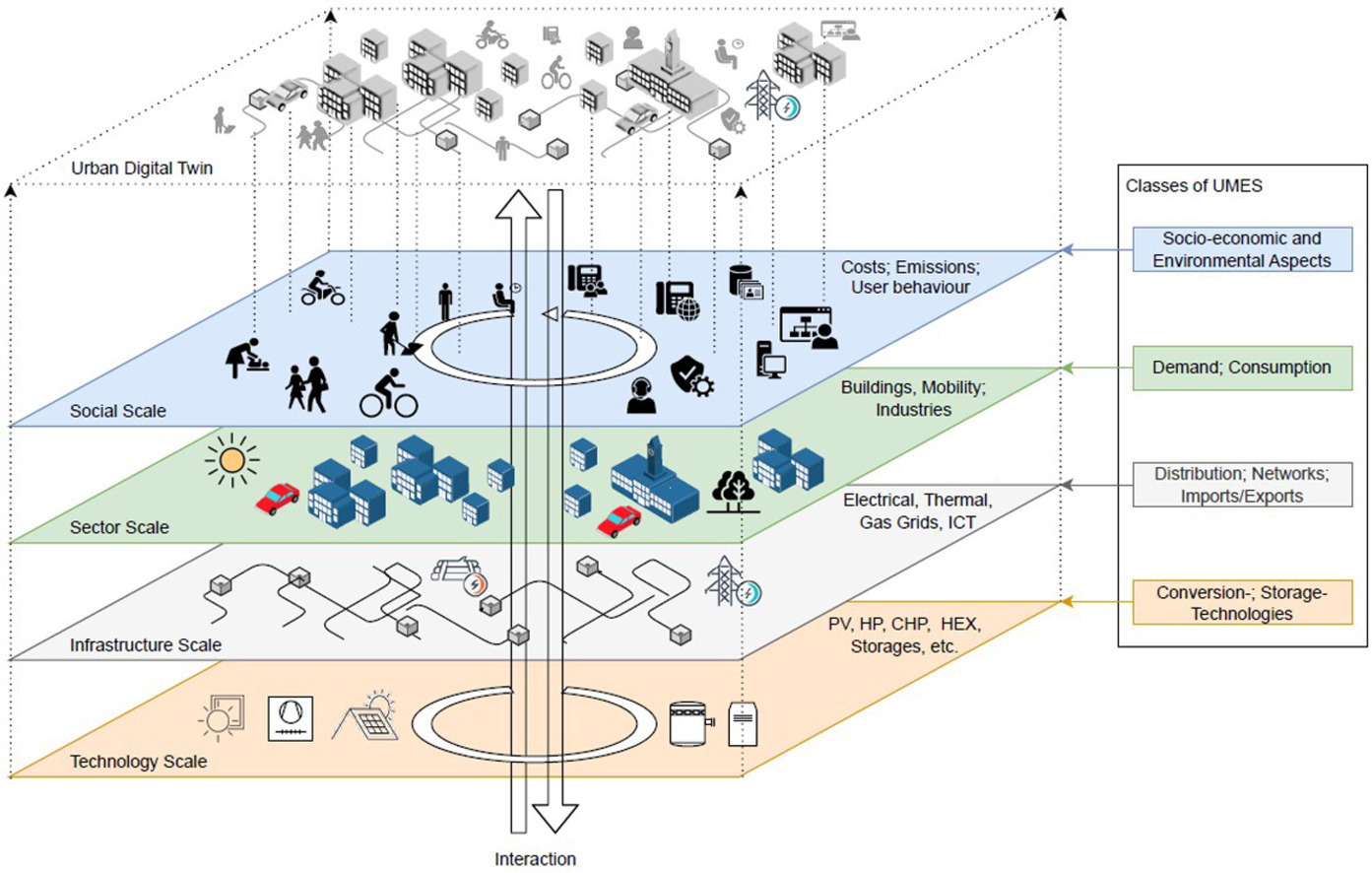This review explores digital twin opportunities for Urban Multi-Energy Systems (UMES) by first considering the challenges of urban multi energy systems. It then reviews recent advancements in digital twin architectures, energy system data categories, semantic ontologies, and data management solutions, addressing the growing data demands and modelling complexities. It also highlights that future research should focus on scaling digital twins to manage the complexities of urban environments. The paper concludes by making a series of recommendations on how digital twins could be implemented for urban multi energy systems.
Highlights:
- Urban multi-energy system's digital twins (UMES DTs) are emerging in the energy landscape.
- UMES DTs should have a real-time data connection to the physical twin updated at desired intervals.
- Adherence to standardized ontologies will facilitate interoperability & scalability.
- UMES DT architecture balances interpretability & accuracy with open, semi-open, & closed models.
- Planning UMES DTs should accompany and enhance the operation & decommissioning/reuse phase.
Keywords:
Digital twin, Urban energy systems, Digitalization, Modeling, Data, Ontologies, Life-cycle phases
Corresponding author:
- Binod Koirala, Urban Energy Systems Lab, Swiss Federal Laboratories for Materials Science and Technology (Empa), Überlandstrasse 129, 8600 Dübendorf, Switzerland, binod.koirala@empa.ch
